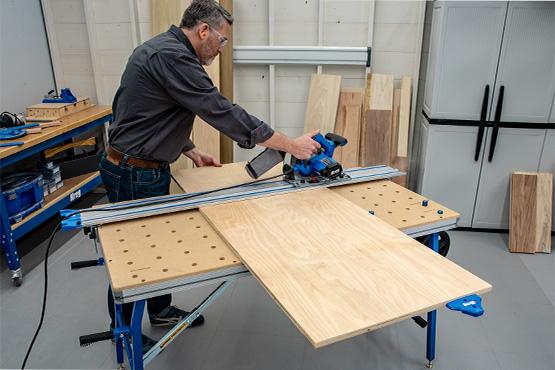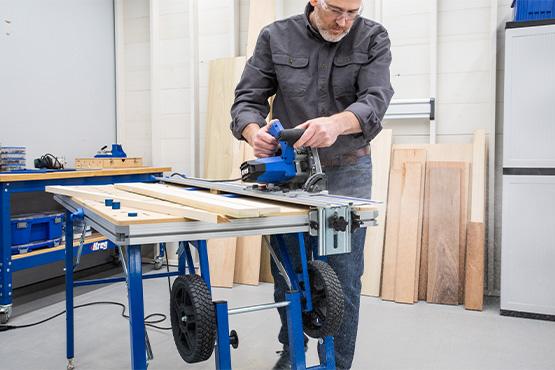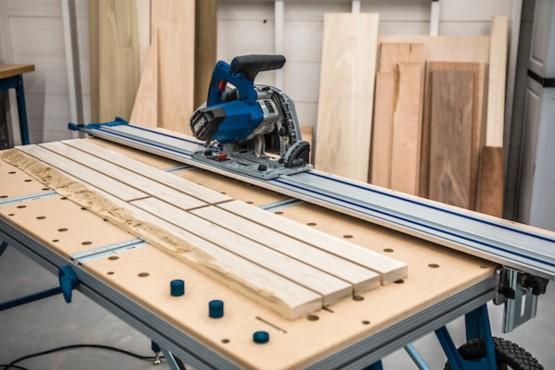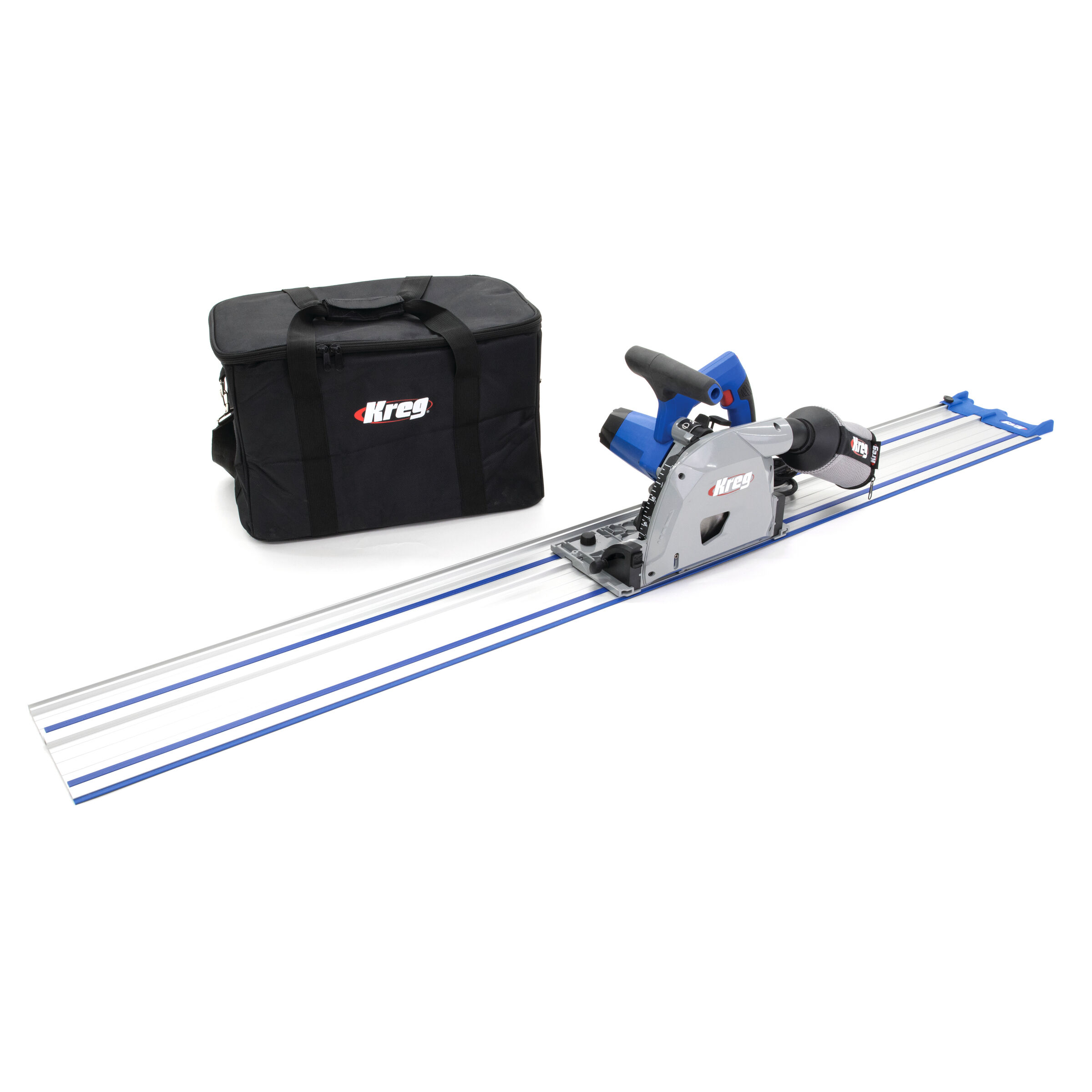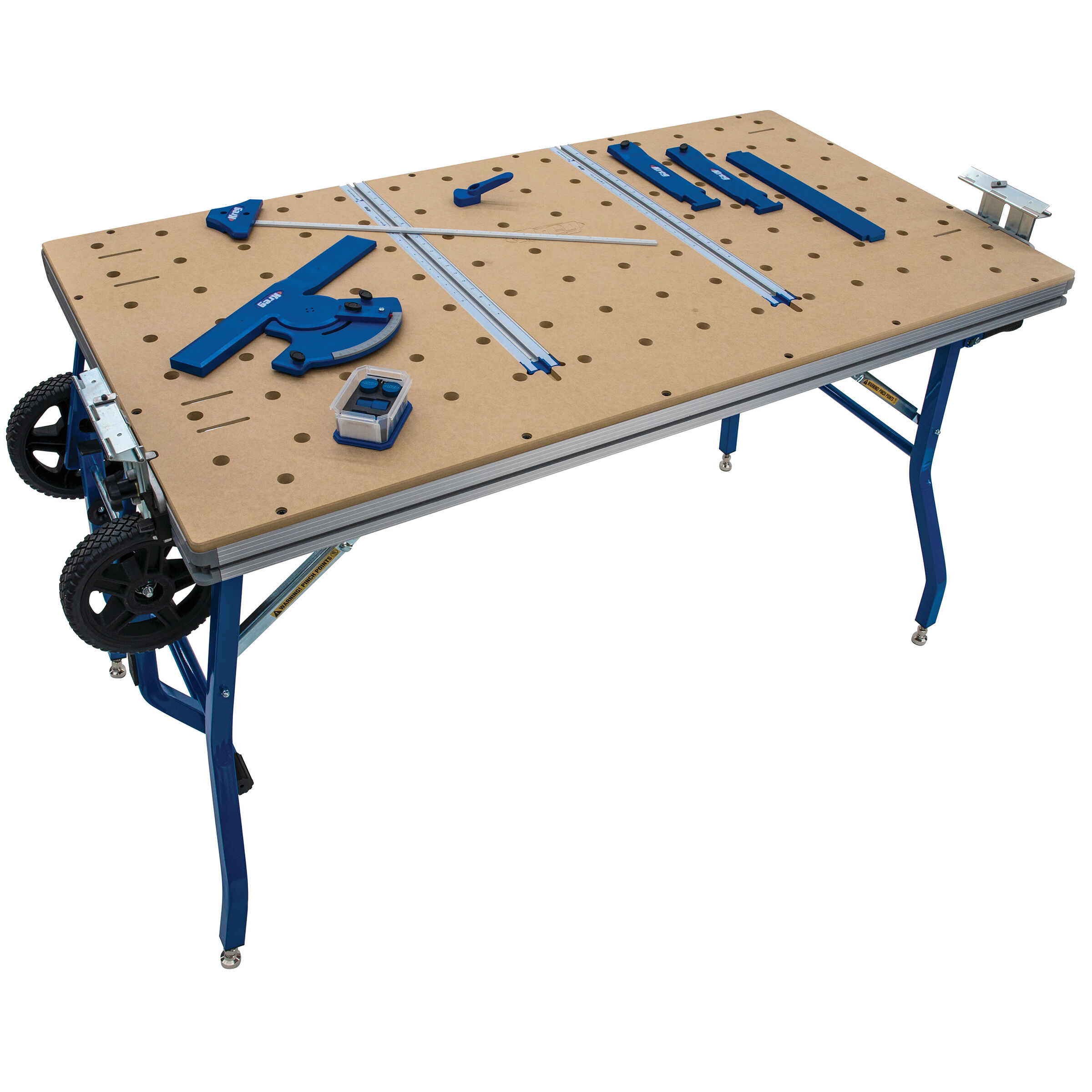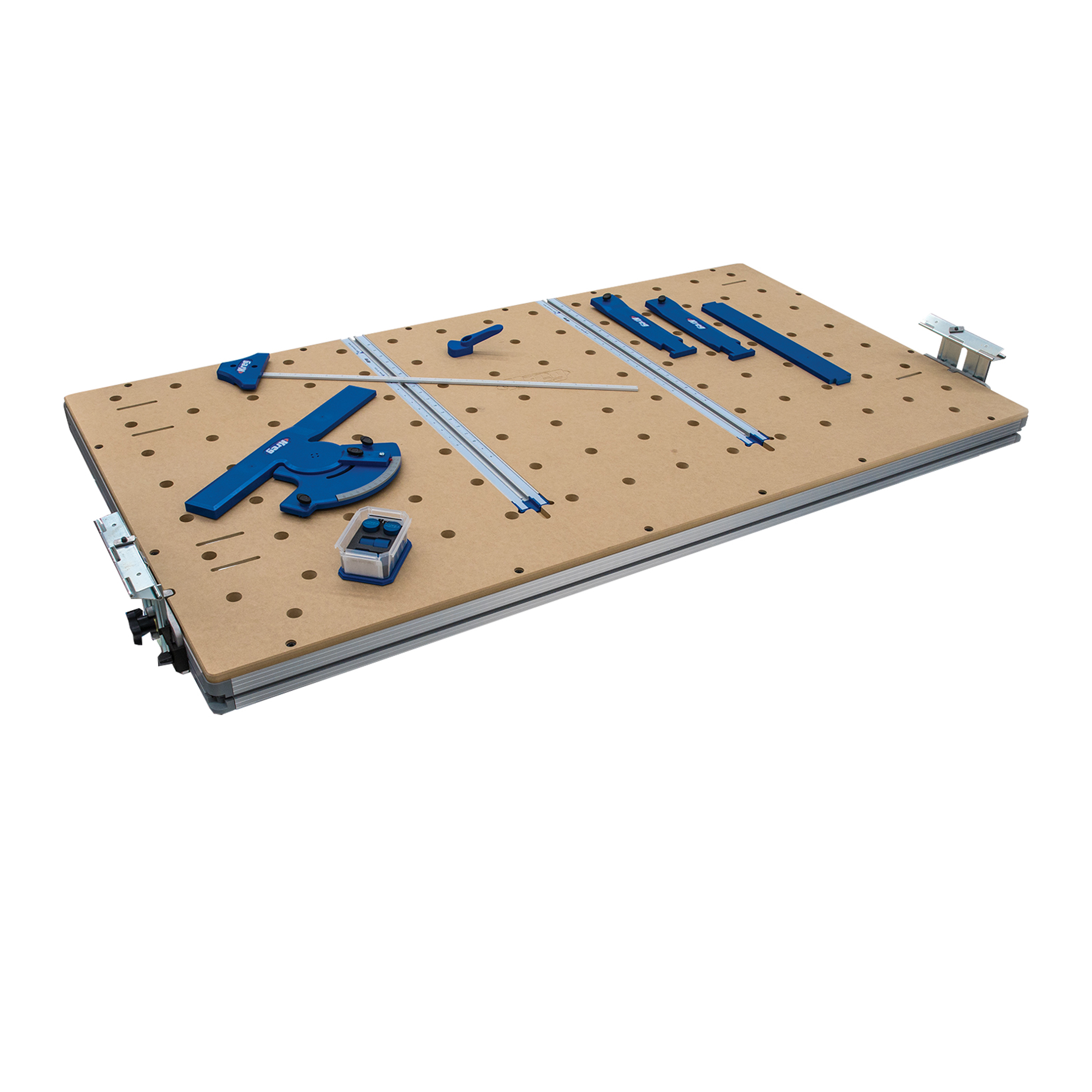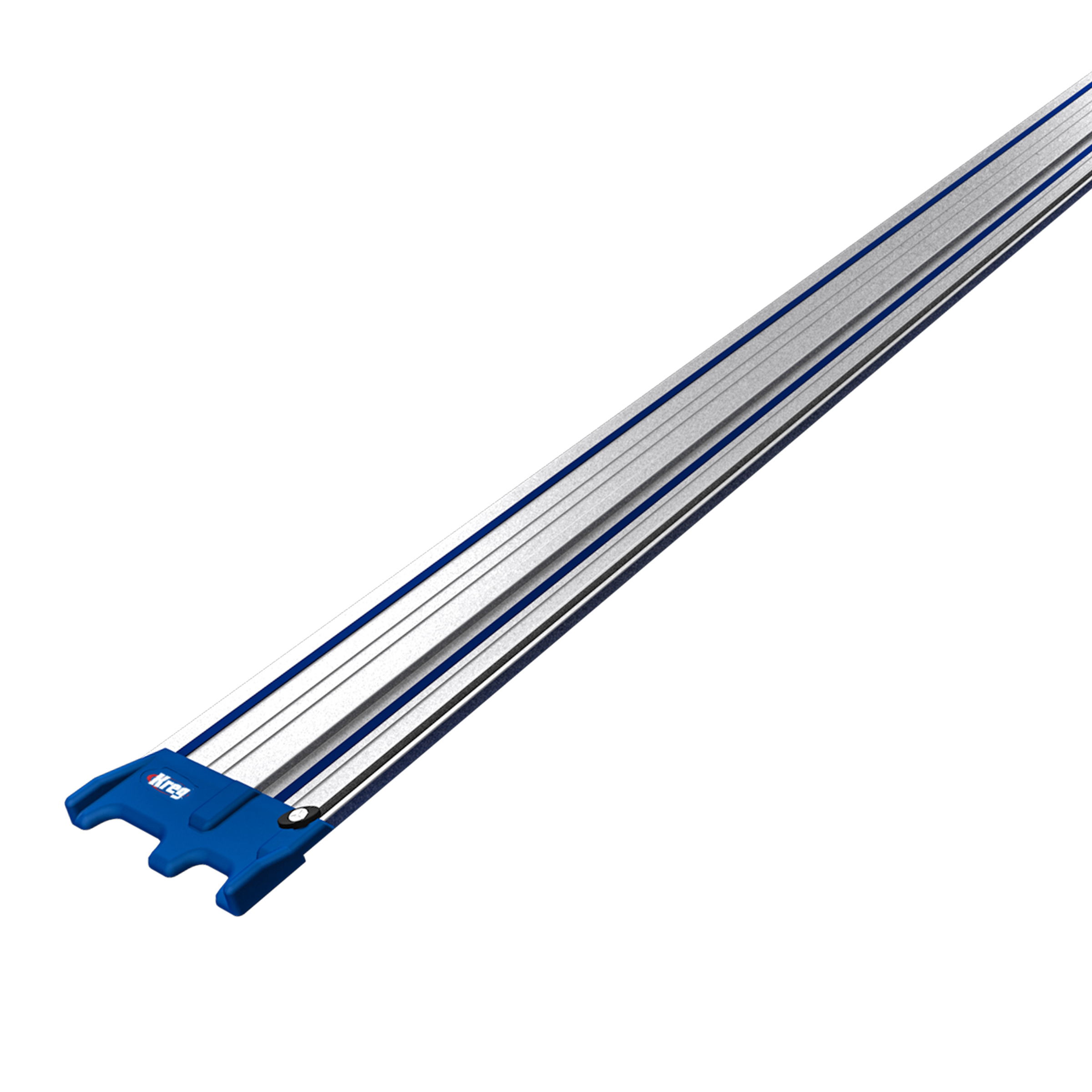When it comes to woodworking and carpentry, having the right tools is crucial for achieving accurate and efficient results. Among the many options available, two popular choices stand out: the track saw and the table saw. Both tools have their strengths and are suited for different applications. Deciding which one is best for you depends on the type of projects you undertake, available workspace, and personal preferences.
What is Better – a Track Saw or a Table Saw?
First, what is the difference between the two tools?
Choosing between a track saw and a table saw, understanding the differences between these two cutting tools is essential to making an informed decision. Both tools offer unique advantages, catering to different woodworking needs and preferences. Let’s delve into the distinctions between them to help you determine which one suits your projects best.
Track Saw
A track saw, often referred to as a plunge saw, stands as a pinnacle of precision and versatility. This handheld cutting tool operates harmoniously with a guided track system, offering a level of accuracy that’s hard to match. Its circular blade, adept at adjusting depth and angle, transforms it into a master of controlled cuts. What truly sets the track saw apart is its remarkable ability to create clean and precise cuts while gliding along the track. This track system not only ensures stability but also guarantees straight cuts over long distances. The track saw is the epitome of mobility and accuracy, making it ideal for tasks that demand meticulous detailing and seamless alignment.
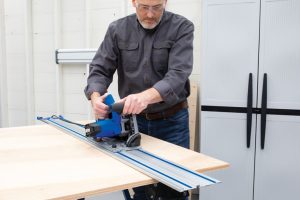
Table Saw
On the other end of the spectrum stands the table saw, a stationary power tool that packs a punch in terms of versatility and power. Mounted on an arbor, the circular blade of a table saw holds the potential to tackle various cutting tasks with finesse. The table saw’s defining feature is its flat table-like surface, complete with an adjustable fence and a miter gauge. This dynamic trio enables woodworkers to feed the material into the blade, facilitating a range of cuts including rip cuts, crosscuts, and bevel cuts. The table saw is a true workhorse, excelling at handling larger pieces of wood and accomplishing repetitive cuts with efficiency. Its stationary nature, combined with its robust design, makes it a staple in woodworking shops where productivity and versatility are paramount.
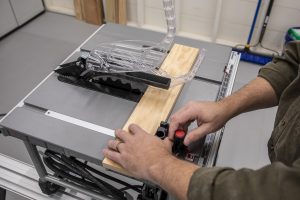
In essence, the choice between a track saw and a table saw boils down to the nature of your projects, the level of precision required, and your preferred working style. If you value mobility, precision over longer distances, and intricate detailing, the track saw is a remarkable companion. On the other hand, if you seek versatility and the ability to tackle a variety of cuts, the table saw stands as a trustworthy ally.
Remember, the “better” option depends on the specific demands of your woodworking endeavors. So, whether you opt for the finesse of a track saw or the might of a table saw, rest assured that both tools will play an integral role in shaping your woodworking journey.
How do they compare in terms of functionality, versatility, and usage scenarios?
Functionality:
Track Saw: When it comes to functionality, the track saw emerges as a master of precision and finesse. Its exceptional capability lies in its ability to craft precise and clean cuts, particularly when dealing with long or large materials. The true magic happens when the track saw is guided along the track system, where its accuracy shines, ensuring each cut remains straight and impeccably smooth. This makes the track saw a go-to tool for projects that demand flawless, intricate cuts without compromise.
Table Saw: On the other hand, the table saw brings forth its own realm of functionality. Its forte lies in the realm of versatility. The table saw’s expansive working surface, accompanied by its adjustable fence and miter gauge, make it a true chameleon in the world of woodworking. This tool’s prowess lies in its adaptability to different types of cuts. Whether it’s rip cuts, crosscuts, or bevel cuts, the table saw seamlessly transitions between these tasks, enabling woodworkers to achieve a wide range of outcomes with ease and precision.
Versatility:
Track Saw: When it comes to versatility, the track saw stands out in terms of portability and adaptability. Its compact design and ease of transport make it a reliable companion on job sites, adapting effortlessly to a variety of workpieces, irrespective of their size or location. This portability is a boon for woodworkers who require on-the-go precision without compromising on quality.
Table Saw: While not as portable as its track saw counterpart, the table saw compensates with its exceptional versatility in handling complex cuts. The adjustable fences provide woodworkers with the ability to create accurate and repeatable cuts at varying angles and widths. This makes the table saw a true workhorse in the workshop, offering a wide array of cutting options to cater to diverse project needs.
Usage Scenarios:
Track Saw: In terms of usage scenarios, the track saw truly shines in environments where mobility, precision, and pristine cuts are paramount. It finds its prime application in on-site construction and installation work, where its ability to tackle large panels and sheets of material with finesse makes it an invaluable asset. Whether it’s framing, flooring, or cabinetry, the track saw excels in projects where perfection meets practicality. Check out our article on using a track saw.
Table Saw: Conversely, the table saw is tailor-made for the workshop. Its versatility and adaptability make it a staple for tasks that demand high-volume cutting and intricate joinery. From dimensioning lumber to crafting intricate furniture pieces, the table saw is the go-to choice for woodworkers who require precision, power, and flexibility to transform raw materials into refined masterpieces.
In essence, the choice between the track saw and the table saw hinges on the specific demands of your projects. The track saw boasts mobility, clean cuts, and on-site convenience, while the table saw offers a dynamic range of cuts and adaptability in a workshop setting. Both tools carve a distinct space in the world of woodworking, and your decision should be guided by the nature of your projects and the outcomes you aim to achieve.
Determining which option is “better” between a track saw and a table saw ultimately depends on your specific requirements and the type of projects you undertake. Consider the following factors:
Project Scope:
The scale, complexity, and nature of your projects. Determine whether you require portability, precision, or the ability to handle larger workpieces.
Workspace:
Evaluate the available space in your workshop or job site, as table saws almost always require more dedicated space compared to track saws.
Budget:
Consider the cost implications, as track saws and table saws vary in price, and additional accessories might be required.
Remember, the choice between a track saw and a table saw should align with your unique needs. Carefully evaluate the functionality, versatility, and usage scenarios, then prioritize the tool that best suits your project requirements.
![]()
Can a Track Saw Replace a Table Saw?
A track saw could serve as a substitute to a table saw in the following situations:
On-Site Work:
Its portability makes it ideal for construction sites or mobile work.
Breaking Down Large Panels:
Accurate and clean cuts can be achieved when cutting large panels or sheets.
Limited Space:
Its smaller size allows for greater maneuverability in small workshops.
However, despite its versatility, there are limitations to consider, and a table saw is still necessary in specific instances:
Advanced Joinery:
Complex joinery tasks, like box joints or dado cuts, demand the precision and adjustability of a table saw.
High-Volume Cutting:
Efficient and accurate high-volume cutting tasks are better suited for a table saw.
Evaluate project requirements, available space, and budget constraints to determine if a track saw can effectively replace a table saw.
![]()
Why Would You Need a Track Saw?
What’s the point of a track saw? It’s an incredibly valuable tool that offers several benefits and advantages for woodworking projects. Here are some reasons why you might need a track saw:
Precision Cutting:
The track system ensures straight and accurate cuts, even over long distances. This level of precision is particularly important when working on projects that require clean and flawless cuts, such as cabinetry and flooring.
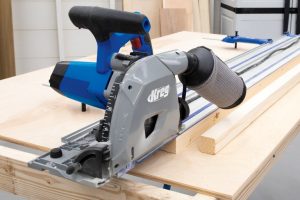
Portability:
Unlike table saws or other stationary tools, track saws are designed for mobility. They are lightweight and easily portable, making them an excellent choice for onsite work or projects that require moving around.
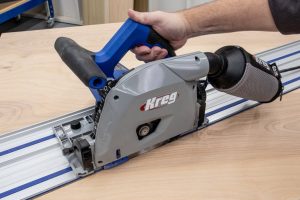
Handling Large or Unwieldy Materials:
Working with large or unwieldy materials can present challenges, but a track saw excels in this aspect. The guided track system ensures stability and control, allowing you to make accurate cuts on oversized sheets or panels. It also eliminates the need to wrestle heavy sheet goods onto a table saw and maintain control throughout the cut.
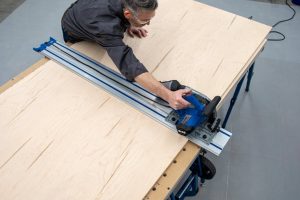
Versatility in Various Projects:
Track saws are versatile tools suitable for a wide range of projects. They can handle tasks like crosscuts, rip cuts, bevel cuts, and plunge cuts.
Safety:
Track saws are designed with safety features and user-friendly functionalities. The plunge mechanism allows for controlled cutting, reducing the risk of kickback.
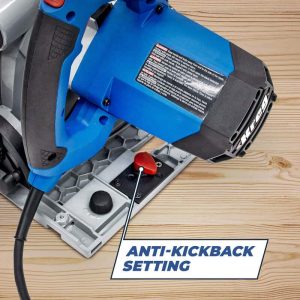
Examples of projects or situations where a track saw shines include installing hardwood flooring, cutting large panels for custom cabinetry, trimming doors or windows, and working in tight spaces where maneuverability is crucial.
![]()
What is the Disadvantage of a Track Saw?
While track saws offer numerous advantages, they also have certain limitations and disadvantages to consider. Here are some drawbacks associated with track saws:
Limited Cutting Depth:
Compared to table saws, track saws typically have a more limited cutting depth. This can be a disadvantage when working with thicker materials or when trying to make deep cuts.
Reliance on Guide Tracks:
While the guided track system provides stability and accuracy, it also means that track saws rely heavily on the availability and use of guide tracks.
Less Versatility for Complex Cuts:
While track saws excel at straight cuts, they may not be as versatile for complex cuts or advanced joinery tasks compared to table saws.
![]()
Track Saw or Table Saw – Which Is The Right Choice For You?
Choosing between a track saw and a table saw is not a matter of declaring one tool superior to the other. Instead, it’s about understanding their unique capabilities and determining which one aligns best with your specific needs and preferences.
If you value portability, precise and clean cuts, especially in large or unwieldy materials, a track saw might be the ideal choice for you. Its compatibility with guide tracks allows for straight and accurate cuts, while its maneuverability enables you to work in various locations. However, a track saw may have limitations in terms of cutting depth and the need for additional accessories.
If you require versatility, larger cutting capacities, and the ability to handle a wider range of projects, a table saw is a solid option. Its stable surface, adjustable fence, and powerful motor make it well-suited for crosscuts, rip cuts, and complex woodworking tasks. Nonetheless, it’s important to consider the space requirements, as table saws tend to occupy more room in a workshop.
Ultimately, your decision should be based on evaluating your project requirements, available workspace, budget, and personal preferences. Consider the pros and cons discussed and weigh the factors that matter most to you. Remember, the best tool for you is the one that meets your specific needs and enhances your woodworking experience.

